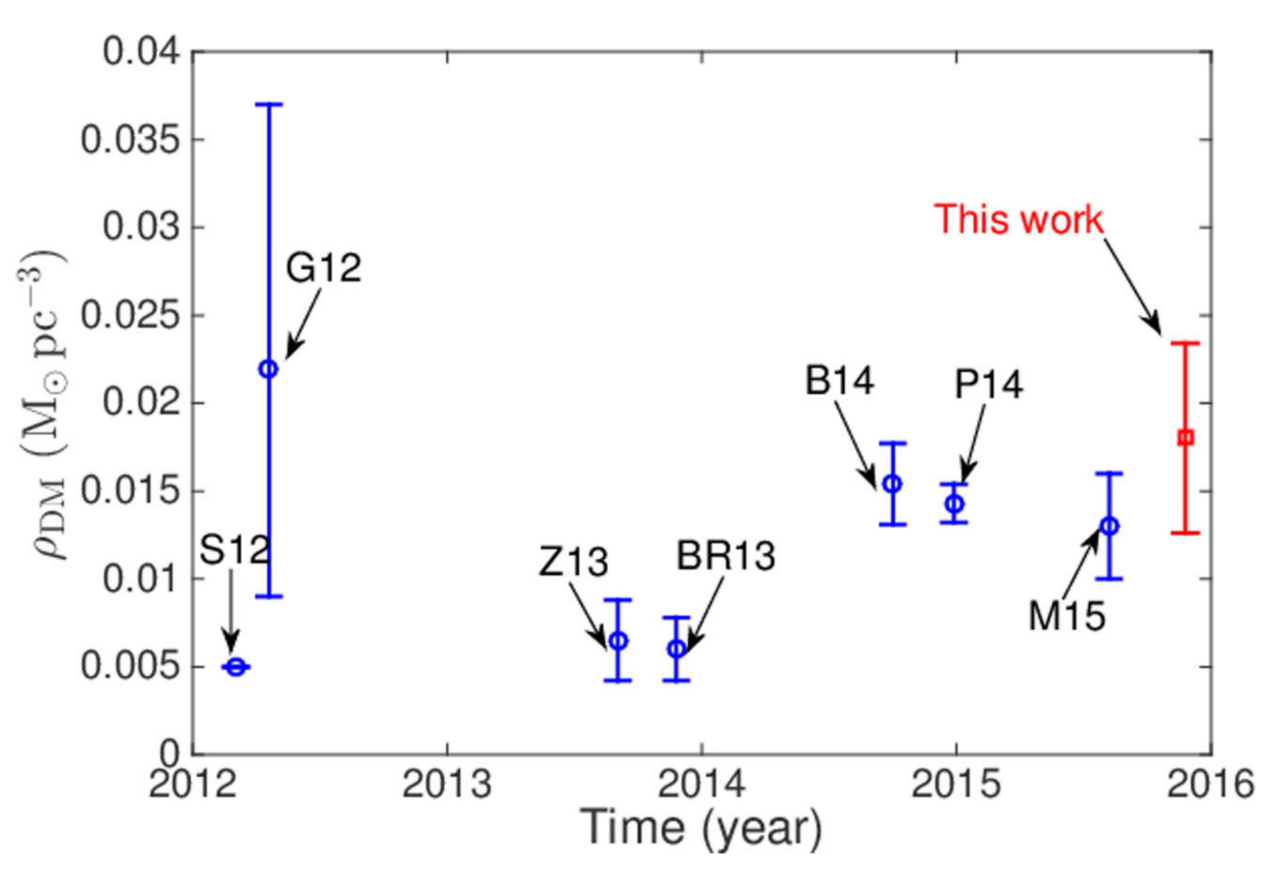You are here
A new measurement of the dark matter mass density in the solar neighborhood using LAMOST survey data
Recently, Xia Qiran, Liu Chao, Mao Shude and their collaborators from the National Astronomical Observatories, CAS measured the mass density of the dark matter in the local volume around the Sun. With the new carefully selected LAMOST data and a simple analytical Kz force model depending on less assumptions, they obtained that the volume density of the dark matter around us is 0.018±0.005M⦿pc-3, slightly larger than most of the previous measurements done by other groups. This work has been published in the Monthly Notice of the Royal Astronomical Society.

The mysterious dark matter particles are thought not to be involved in the electromagnetic interaction and consequently cannot be detected from any form of light. However, astronomers can detect them by measuring the gravitational force given by these particles. In general, the fraction of the dark matter, which plays crucial role in the evolution of the universe in every scales, is one of the most fundamental parameters in astrophysics. Now-a-days, cosmological observations constrains that about 70% of the matter is contributed by the dark matter in the whole universe. However, in a Milky Way-like galaxy, the fraction of the dark matter can be more than 90%. But because the dark matter is sparsely distributed in the halo of the galaxy, only very few portion of the mass nearby the galactic disk is from the dark matter. This makes it very difficult to accurately measure the density of the dark matter around our Sun.
An accurate measure of the local dark matter density is critical in the experiments of looking for the dark matter particles on the Earth. It is also the key to understand how much the dark matter is in the Milky Way. Since the famous Dutch astronomer Oort did the first try in 1932, many efforts have been done by lots of astronomers. However, the different measurements from different groups of people are far from agreement. A large set of samples with well controlled selection function and a reliable dynamical model are the keys to provide accurate measures. LAMOST survey have observed millions of the stars, allowing for the reliable dark matter density measurement with the ever largest dataset. As a first try, Xia and his collaborators only used a few thousands of stars around the north Galactic pole to derive this result. With the latest data release, they are able to use much more data to improve the accuracy of the measure from 30% to only 10%.
